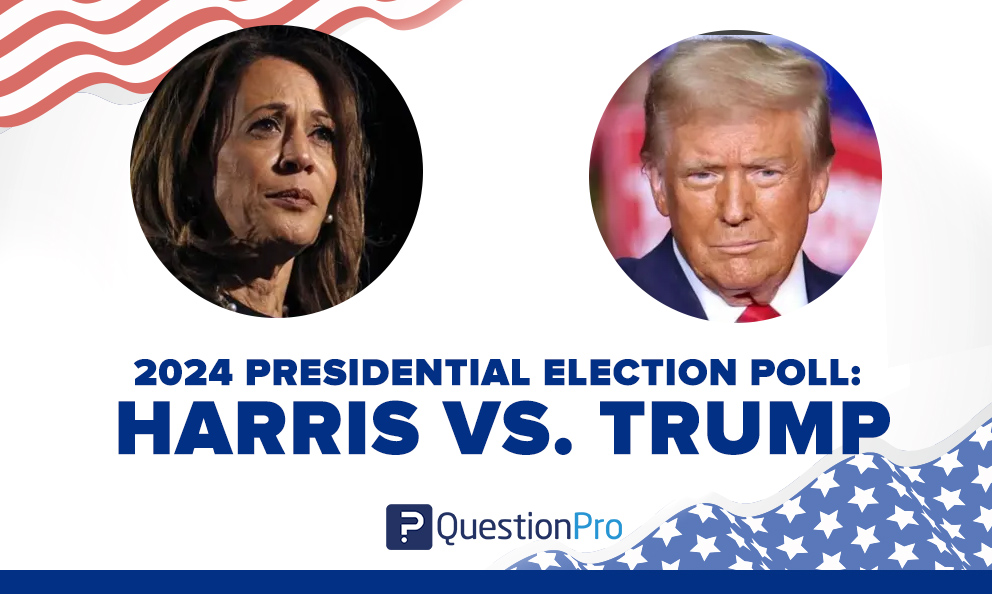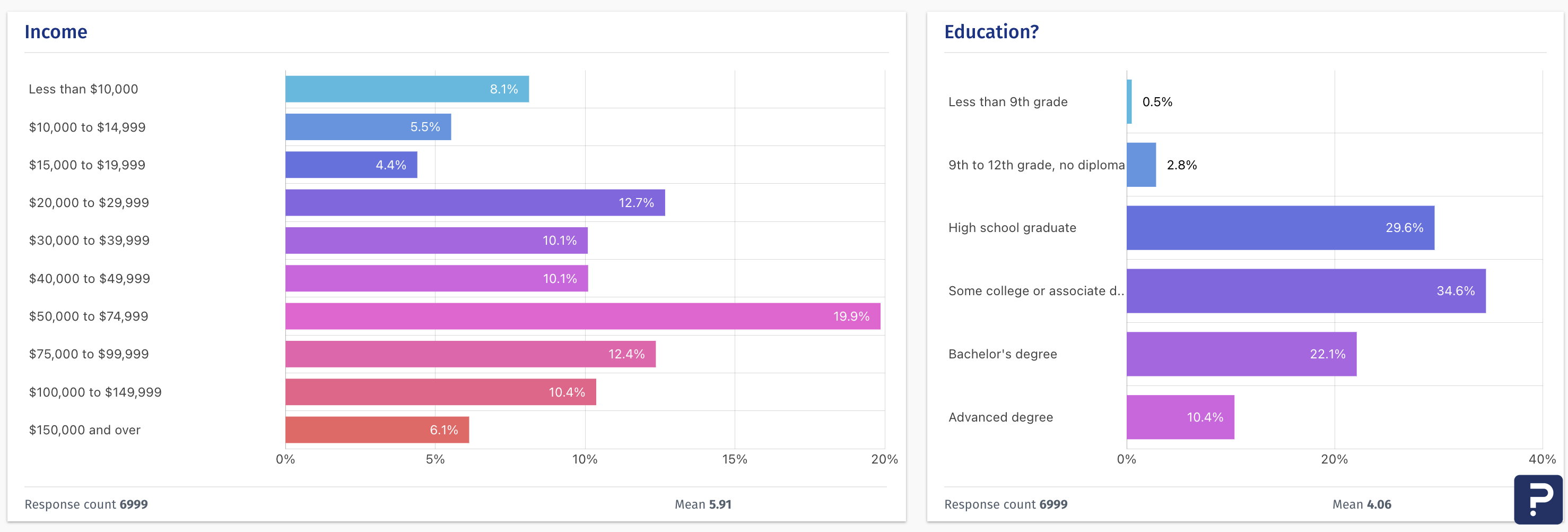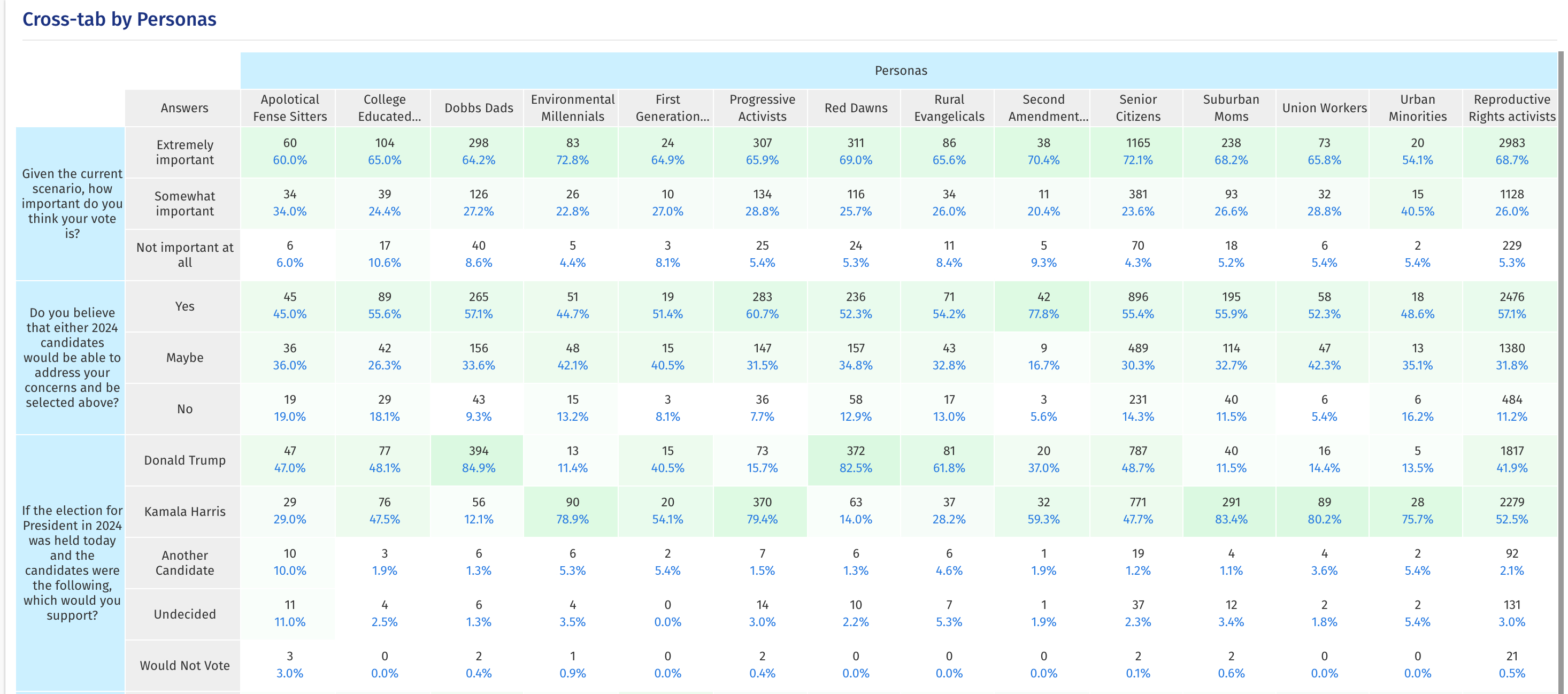
With the 2024 U.S. presidential election fast approaching, recent polls shed light on voter preferences and trends that could shape the race. In this article, we’ve compiled some of the most relevant insights from our most recent survey, capturing responses from 6,999 participants across 18 carefully crafted questions. As the nation contemplates a pivotal decision, here’s what we know so far:
Who Are the Respondents?
- Total Respondents: 6,999
- Gender Breakdown: Female: 3,918 | Male: 3,075

Voting Patterns by Election Year
One of the poll’s sections asked respondents who they voted for in previous presidential elections. Here’s a look at how support has shifted over the last two decades:
| Election Year | Republican Candidate (%) | Democratic Candidate (%) | Did Not Vote/Too Young (%) |
|---|---|---|---|
| 2004 | 35.1% (n=2456) | 38.5% (n=2694) | 26.4% (n=1849) |
| 2008 | 31.8% (n=2226) | 41.9% (n=2936) | 26.2% (n=1837) |
| 2012 | 32.4% (n=2268) | 43.6% (n=3049) | 24.0% (n=1682) |
| 2016 | 38.0% (n=2658) | 42.5% (n=2978) | 19.5% (n=1363) |
| 2020 | 39.4% (n=2757) | 48.9% (n=3426) | 11.7% (n=816) |
The data reveals a trend of increasing support for Democratic candidates over the years, with a notable peak in 2020. Interestingly, the percentage of voters not participating due to age or other reasons has steadily decreased, reflecting a more engaged electorate over time.
Top Issues Influencing Voter Choice
The survey asked respondents to select the top three issues most likely to influence their voting decision in the upcoming election. Here’s what topped the list:
- Curbing Inflation / High Grocery & Gas Prices: 2,935 votes
- Health/Medicare: 1,954 votes
- Reproductive Rights for Women / Abortion Rights / Access to Medical Services: 1,847 votes
These results suggest that economic concerns, healthcare, and reproductive rights will play decisive roles in the 2024 election. Economic issues ranked as the most critical concern, reflecting widespread anxieties over inflation and rising costs of living. Health and Medicare issues ranked second, underscoring ongoing discussions around healthcare reform and accessibility. Finally, reproductive rights emerged as a significant concern, especially given recent debates and changes in state-level policies.
Voter Preferences for 2024: Harris vs. Trump
When asked about their preferred candidate if the election were held today, respondents indicated a leaning towards Kamala Harris over Donald Trump:
- Kamala Harris: 51.4%
- Donald Trump: 41.0%
- Undecided: 4.1%

These numbers provide an early indication of a competitive race, with Harris leading by a notable margin. However, the undecided 4.1% could prove pivotal, highlighting the importance of campaign strategies and candidate outreach in the final stretch.
In-Depth Cross-Tab Analysis
To offer a deeper understanding of the voting landscape, the survey data is further segmented across various demographic and psychographic dimensions. These cross-tabulations shed light on how different groups align with specific issues, providing nuanced insights beyond overall trends. Here’s a closer look at the various cross-tabs used in the analysis:
Cross-Tab by Personas
Our polling includes data cross-tabulated by “personas”—aggregated profiles that capture respondents based on lifestyle, values, and preferences. This segmentation reveals unique trends within specific voter groups, allowing for an examination of how voter intentions, concerns, and candidate preferences align with broader lifestyle identities. Check our dashboard to access the complete tables.

Cross-Tab for Gender and Age
Gender and age cross-tabs provide a clearer picture of demographic divides in this election. The gender cross-tabulation has already highlighted voter preferences, with varying levels of support for candidates and differing issue prioritization between men and women. Age-based cross-tabs reveal patterns in political engagement across generations, allowing us to see how voter concerns shift across age groups, from younger voters’ focus on social issues to older demographics’ emphasis on economic stability and healthcare.
Cross-Tab by Education and Income
In addition to gender and age, our survey includes education and income-level cross-tabs, showing how socioeconomic status influences voting behavior and issue prioritization. These categories provide insights into how higher and lower-income voters and those with varying levels of formal education perceive current political issues and align with candidates. Economic cross-tabs are particularly telling this election cycle, as inflation and cost-of-living increases directly impact these groups’ priorities and candidate support.
Conclusion
The 2024 presidential election is becoming closely contested, with critical issues around inflation, healthcare, and reproductive rights driving voter priorities. The polling data suggests Kamala Harris currently holds an edge over Donald Trump, yet a significant portion of the electorate remains undecided. As campaigns ramp up, these results underscore the importance of addressing voters’ top concerns to secure support in November.
This data is a snapshot of voter sentiment, providing valuable insights into a high-stakes election. Need more details about our survey? Contact Tim Cornelius, our Director of QuestionPro Audience.







